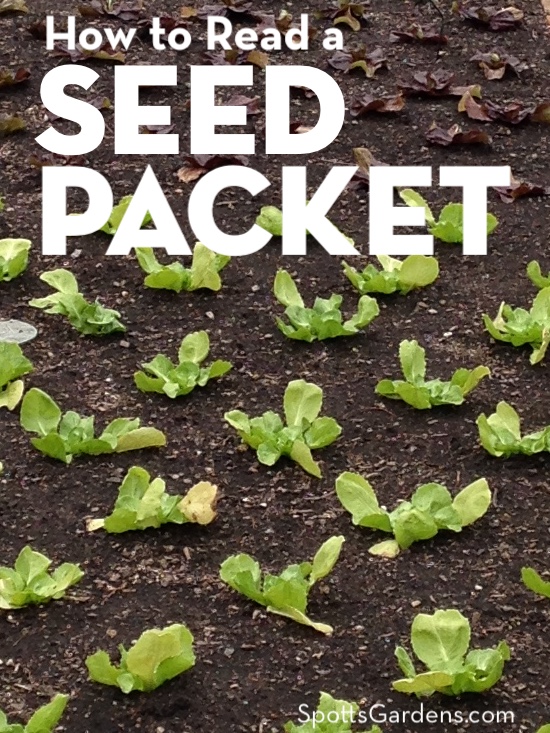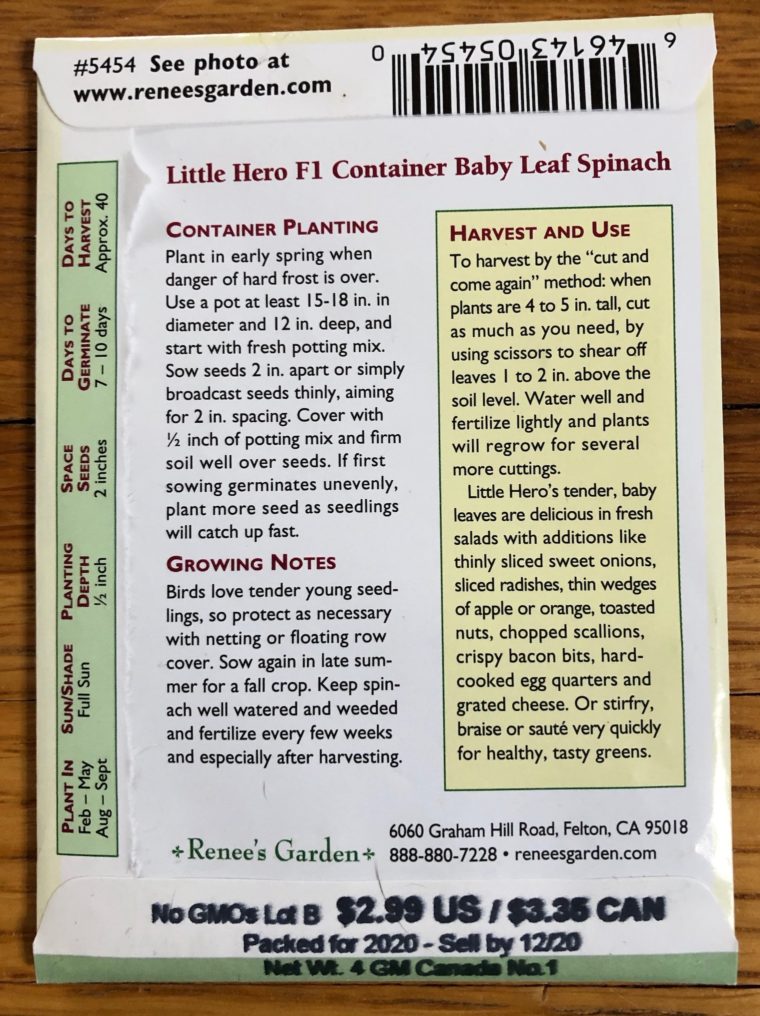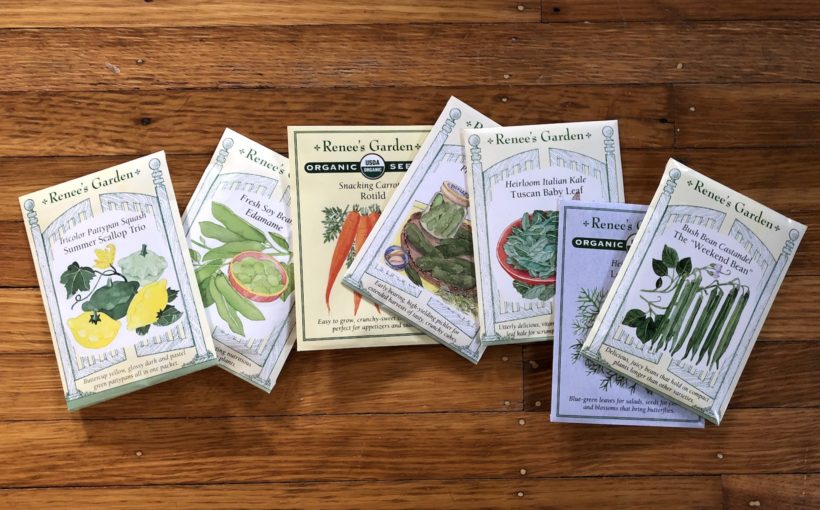Those little paper packets contain not just flowers and vegetables for this year’s organic garden, but also loads of information that can improve your chances for success growing from seed.

Seed Packet Information
Planting depth: how deep to plant the seeds. Bigger seeds are planted more deeply; tiny seeds are barely covered with a fine layer of compost.
Row spacing: how far apart the rows should be if you’re planting a farm-style garden. Ignore this measurement if you’re using an intensive system like square-foot gardening.
Seed spacing: how far apart you should plant the seeds. If you plant using the “seed spacing” measurements, expect to have to thin your plants later in the season.
If you’re using the square foot garden method, check for a “thinned” spacing or instructions for thinning the plants. Plant using that spacing instead.

Days to germination: time between planting and the seedling sticking its head out of the soil.
Days to harvest: time between planting the seed and getting food out of the plant.
Sun/location: how much sunlight the plant needs.
- Full sun = 6 hours or more (8 or more for tomatoes, peppers, and eggplants)
- Part sun = 4 to 6 hours of sun
- Shade = less than 4 hours.
Expiration date: usually printed in different type, this date tells you how long your seeds should be good. Store seeds in a cool, dry, dark location in a sealable plastic bag or a lidded glass jar.
More Tips for Growing from Seed
If you plan to plant in summer to harvest in fall, buy your fall seeds in late winter or early spring when you buy the rest of them. It can be hard to find seeds in local stores in midsummer.
To make succession planting easier, consider keeping seeds in a file box with dividers for each week of the garden year. When you finish planting this week’s seeds, refile them for the next planting date.
